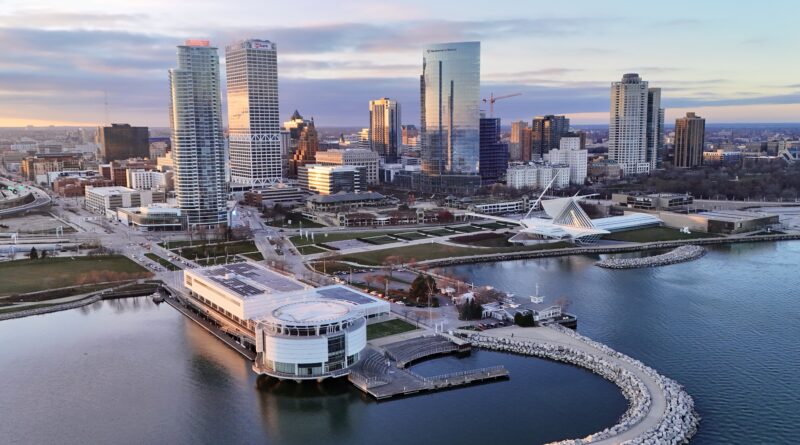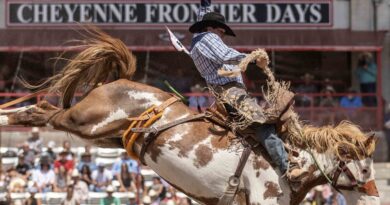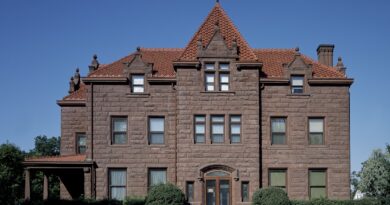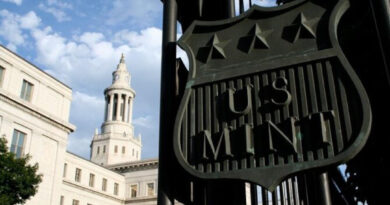History of Milwaukee Wisconsin
Before European settlers arrived, the area that is now Milwaukee, Wisconsin, was inhabited by various Native American tribes, including the Menominee, Fox, Mascouten, Sauk, Potawatomi, and Ojibwe. These tribes thrived due to the region’s rich natural resources, including fertile land, abundant fish, and wildlife. The name “Milwaukee” is believed to have originated from the Algonquian word “Millioke,” which means “good,” “beautiful,” and “pleasant land.”
European Exploration and Early Settlement
European exploration of the Milwaukee area began in the late 17th century with French missionaries and fur traders. Explorers like Father Jacques Marquette and Louis Joliet traversed the region in the 1670s, establishing trading relationships with the Native American tribes. These early interactions were crucial for the fur trade, a significant economic activity during that period.
The first permanent European settlement in Milwaukee was established in the early 19th century by French-Canadian explorer Solomon Juneau. Juneau settled in the area in 1818, working as a fur trader and fostering positive relations with local Native American tribes. By the 1830s, other settlers arrived, including Byron Kilbourn and George H. Walker, leading to the founding of three separate communities: Juneautown, Kilbourntown, and Walker’s Point.
The Founding of Milwaukee
The three settlements—Juneautown, Kilbourntown, and Walker’s Point—were initially independent and often competitive, resulting in conflicts like the “Bridge War” of 1845 over the construction of a bridge across the Milwaukee River. Despite these rivalries, the settlements merged in 1846 to form the city of Milwaukee, named after the river. Solomon Juneau became the city’s first mayor.
Industrial Growth and Immigration
Milwaukee’s strategic location along Lake Michigan and its rivers made it an ideal hub for trade and industry. In the mid-19th century, the city experienced significant growth due to its burgeoning industrial sector. Industries such as brewing, meatpacking, leather tanning, and wheat milling flourished. The city became known as the “Beer Capital of the World” due to its numerous breweries, including the famous Pabst, Schlitz, Miller, and Blatz.
Immigration played a crucial role in Milwaukee’s growth. Large numbers of German, Polish, Irish, Italian, and other European immigrants settled in the city, bringing diverse cultural influences and labor to support the growing industries. By the late 19th century, Milwaukee had a substantial German population, leading to the establishment of German-language newspapers, schools, and cultural institutions.
The Progressive Era
In the early 20th century, Milwaukee became known for its progressive political climate. The city elected several Socialist mayors, including Emil Seidel, Daniel Hoan, and Frank Zeidler. These mayors implemented progressive reforms such as public health initiatives, public housing, and workers’ rights protections. Milwaukee’s socialist administration was unique in the United States and earned the city the nickname “Sewer Socialists” for their emphasis on public works and infrastructure.
The Decline of Industry and Urban Challenges
The mid-20th century brought significant changes and challenges to Milwaukee. The decline of manufacturing and industrial jobs led to economic hardships and population decline. Many factories closed or relocated, contributing to urban decay and increasing unemployment rates. The city also faced issues related to racial segregation and inequality. The African American population, which had grown significantly during the Great Migration, faced housing discrimination, job discrimination, and other systemic challenges.
Revitalization and Modern Milwaukee
In recent decades, Milwaukee has undergone a revitalization effort to address its economic and social challenges. The city has invested in developing its downtown and waterfront areas, encouraging new businesses, residential developments, and cultural attractions. Notable projects include the Milwaukee Riverwalk, the revitalization of the Historic Third Ward, and the development of the Milwaukee Art Museum with its iconic Quadracci Pavilion designed by Santiago Calatrava.
Milwaukee’s cultural scene has also flourished, with numerous festivals, theaters, museums, and music venues. The city hosts events such as Summerfest, the world’s largest music festival, and the Wisconsin State Fair. Additionally, Milwaukee is home to professional sports teams, including the Milwaukee Brewers (MLB) and the Milwaukee Bucks (NBA), which have brought national attention to the city.
Conclusion
Milwaukee, Wisconsin, has a rich and diverse history, from its Native American roots and early European settlement to its industrial growth and modern revitalization. The city’s unique blend of cultural influences, progressive politics, and industrial heritage have shaped its development and character. Today, Milwaukee continues to evolve, offering residents and visitors a vibrant and dynamic urban experience.
Discover more from City Towner
Subscribe to get the latest posts sent to your email.




